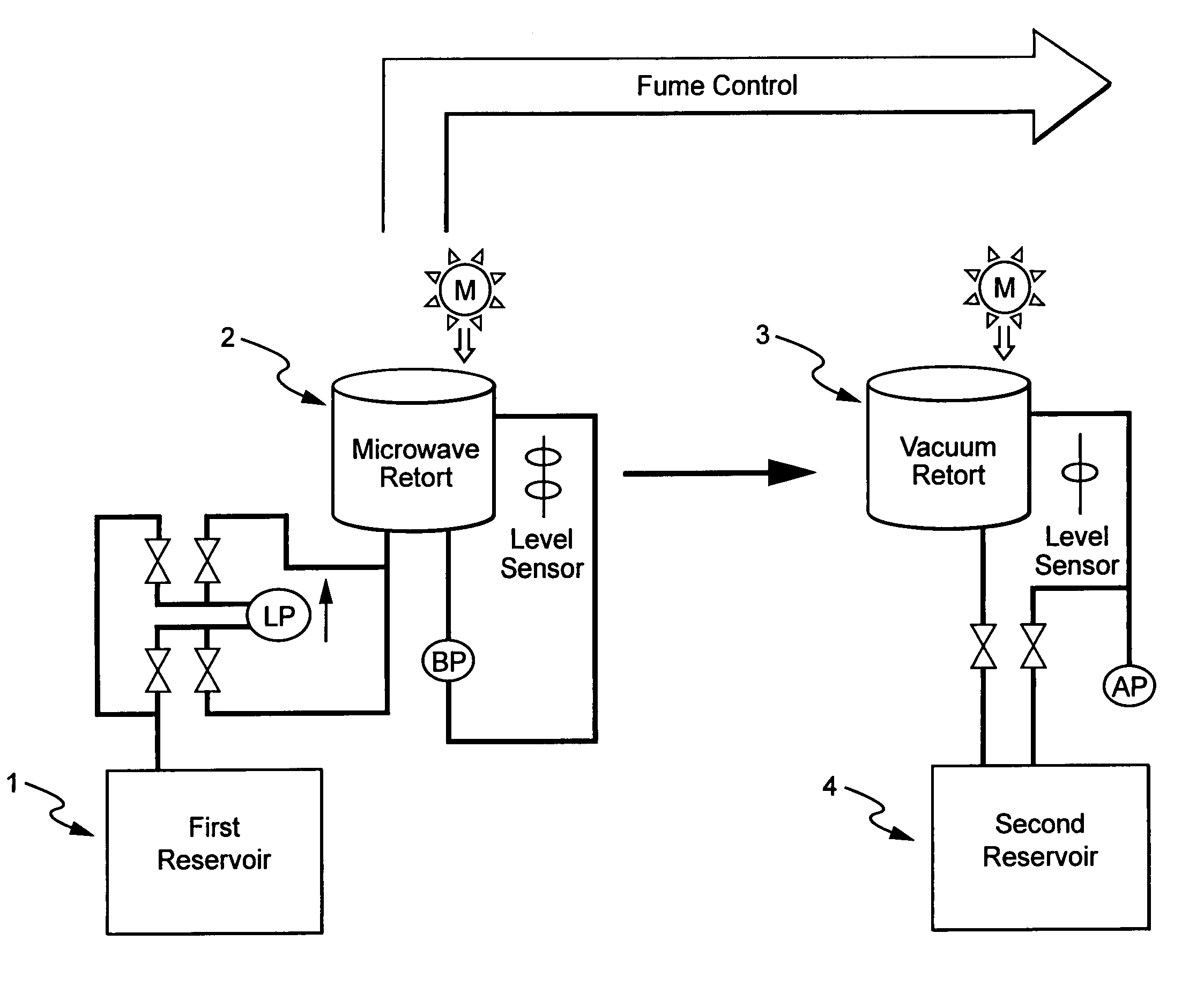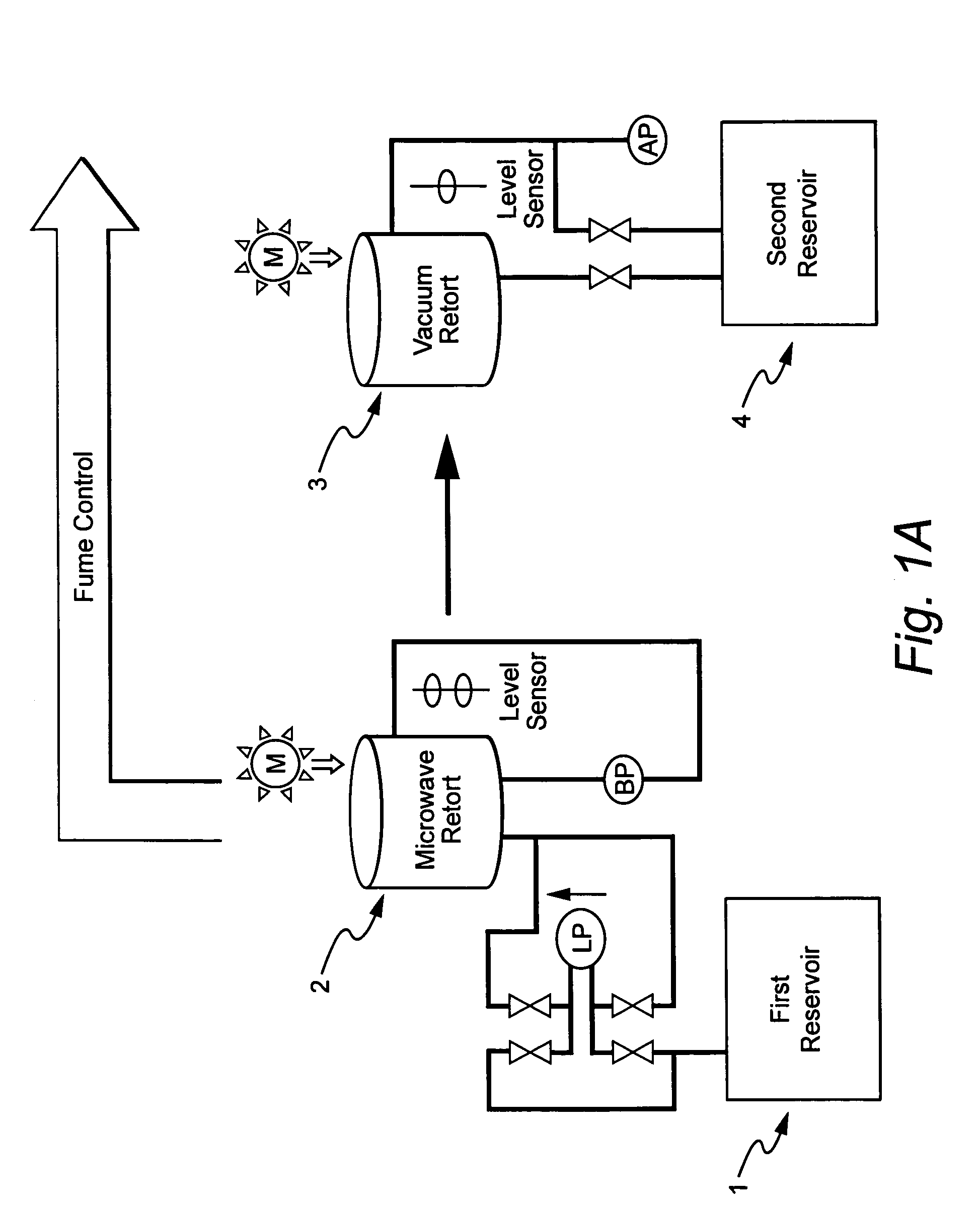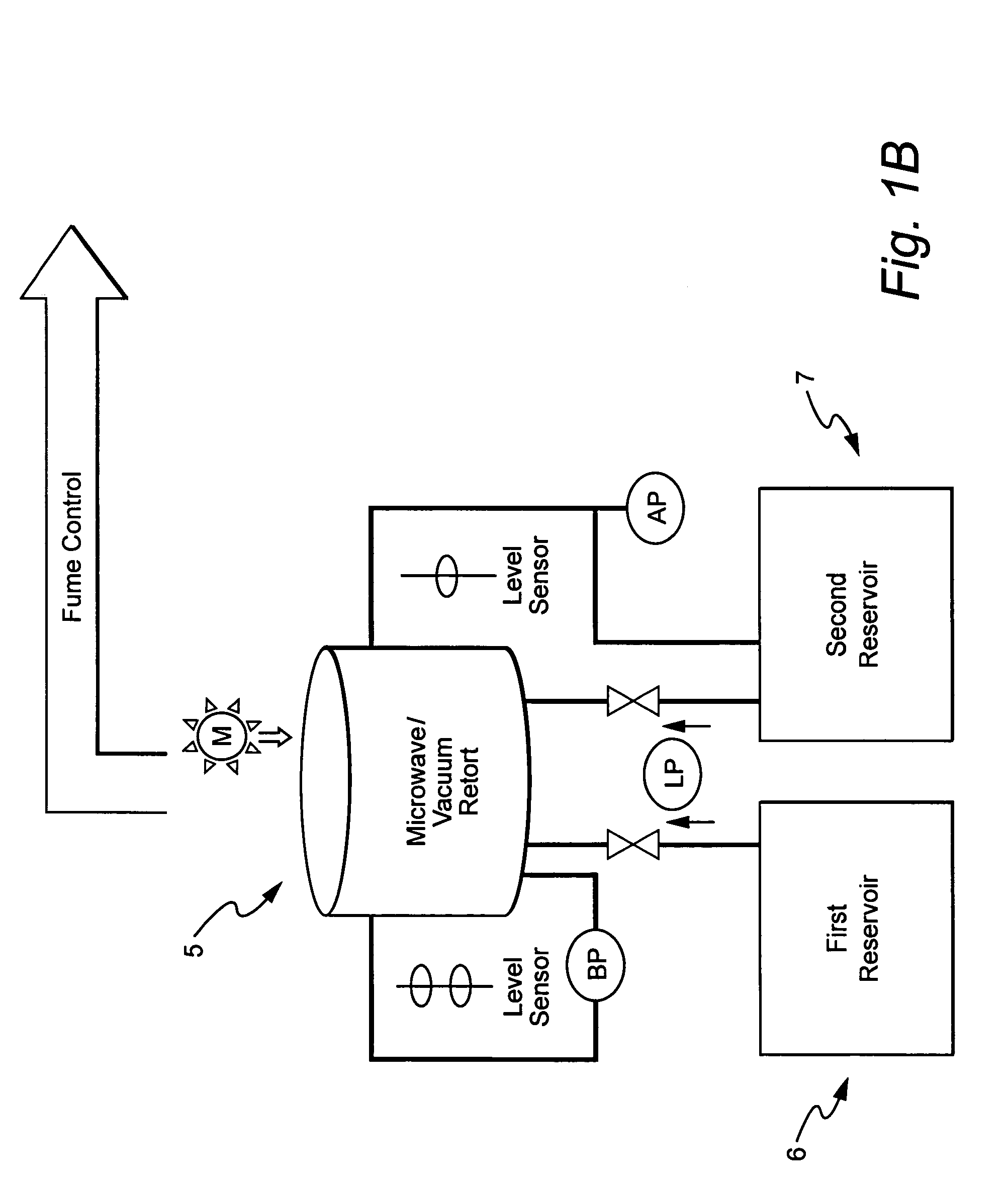Simplified tissue processing
a tissue processing and simplified technology, applied in the direction of analytical instruments, laboratory glassware, instruments, etc., can solve the problems of space being precious and the size of automated instruments, and achieve the effect of reducing the number of reaction modules
- Summary
- Abstract
- Description
- Claims
- Application Information
AI Technical Summary
Benefits of technology
Problems solved by technology
Method used
Image
Examples
example 1
[0071]Tissue processing with a series of non-aqueous solutions is described in U.S. Pat. No. 6,207,408. In particular, a series of four solutions was used to successfully process tissue for histological examination in PCT publication WO 01 / 447683 and published U.S. application 2001 / 0051365. Experience using this prior invention has been described by Morales et al. (Arch. Pathol. Lab. Med. 126:583-590, 2002; Am. J. Clin. Pathol. 121:528-536, 2004). Here, we modified the program used in a rapid tissue processor with a series of four solutions in separate modules to determine the contribution of each solution to successful microtomy and histology. Using these modifications, different solutions in the four modules of the system were selected and the results are summarized in Table 1. The requirement for each solution was assessed with a variety of formalin-fixed tissues which were about 1.5 mm thick.
[0072]
TABLE 1Only two solutions are required for successful tissue processingMicrowave U...
example 2
[0077]Fresh, formalin-fixed, and UM-FIX-treated tissue specimens of about 1.0 mm to about 2.0 mm (preferably about 1.5 mm) in the thinnest dimension have been processed. Bladder, breast, carcinoma of the lung, cervix (squamous epithelium), kidney, liver, ovary, spleen, tonsil, and uterus (endometrium and myometrium) gave uniformly excellent results for microtomy and histology (hematoxylin-eosin staining of deparaffinized sections).
[0078]The non-aqueous admixture is comprised of:[0079]about 25% acetone[0080]about 55% isopropanol[0081]about 20% mineral oil[0082]glacial acetic acid added to a concentration of about 0.5% total volume[0083]DMSO added to a concentration of about 1% total volume.
The three major components were mixed in a volume of 3.8 L, and then the acetic acid and DMSO were added. Specimens were incubated for about 60 minutes in this non-aqueous admixture at about 62° C.; chemical exchange was promoted by agitating the non-aqueous admixture (e.g., aeration). Both the spe...
example 3
[0086]Fresh, formalin-fixed, and UM-FIX-treated tissue specimens of about 1.0 mm to about 2.0 mm (preferably about 1.5 mm) in the thinnest dimension have been processed. Uniformly excellent results for microtomy and histology (hematoxylin-eosin staining of deparaffinized sections) have been obtained for human tissues (e.g., adenoid, breast, kidney, lipoma, liver, placenta, skin, spleen, and uterus) under the following conditions (i.e., two reactions each for about 30 minutes).
[0087]The non-aqueous admixture is comprised of:[0088]about 50% acetone[0089]about 30% isopropanol[0090]about 20% mineral oil[0091]glacial acetic acid added to a concentration of about 0.5% total volume[0092]DMSO added to a concentration of about 1% total volume.
The three major components were mixed in a volume of 3.8 L, and then the acetic acid and DMSO were added. Specimens were incubated for about 30 minutes in this non-aqueous admixture at about 62° C.; chemical exchange was promoted by agitating the non-aq...
PUM
| Property | Measurement | Unit |
|---|---|---|
| temperature | aaaaa | aaaaa |
| temperature | aaaaa | aaaaa |
| pressure | aaaaa | aaaaa |
Abstract
Description
Claims
Application Information
 Login to View More
Login to View More - R&D
- Intellectual Property
- Life Sciences
- Materials
- Tech Scout
- Unparalleled Data Quality
- Higher Quality Content
- 60% Fewer Hallucinations
Browse by: Latest US Patents, China's latest patents, Technical Efficacy Thesaurus, Application Domain, Technology Topic, Popular Technical Reports.
© 2025 PatSnap. All rights reserved.Legal|Privacy policy|Modern Slavery Act Transparency Statement|Sitemap|About US| Contact US: help@patsnap.com



